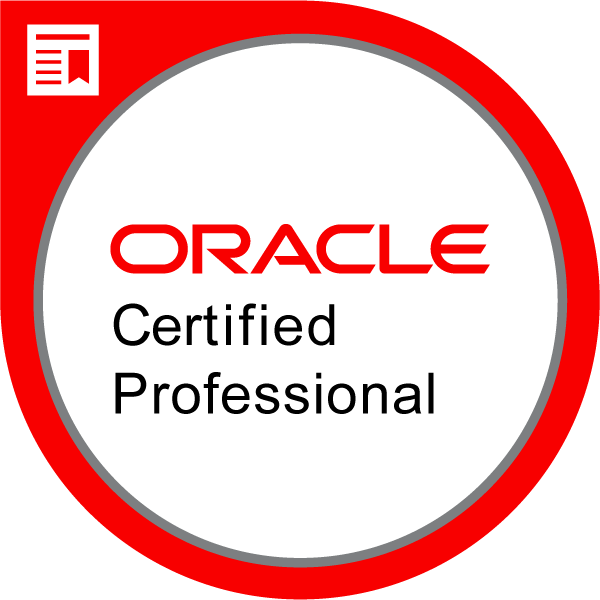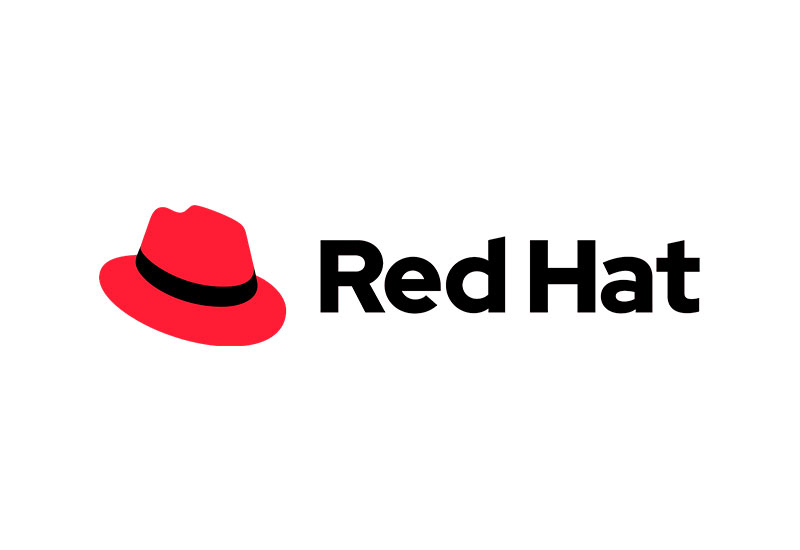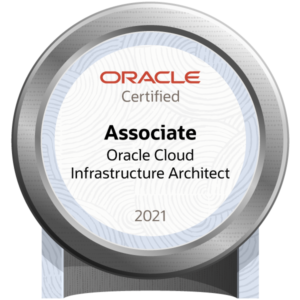Oracle Database 19c: Administration Workshop
Technology provider: ORACLE
Exam: 1Z0-082

At the end of this course, the student should be able to:
- Describe the architecture of the Oracle database
- Describe the architecture and features of Oracle Database Cloud Service (DBCS)
- Create and manage DBCS database deployments
- Configure the database to support your applications
- Manage database security and implement auditing
- Implement basic backup and recovery procedures.
- Move data between databases and files
- Employ basic monitoring procedures and manage performance
Audience profile
- Data Warehouse Administrator
- Database administrator
- Database Designer
- Support Engineer
- technical administrator
Prerequisites
- Oracle Database 19c: SQL Workshop
Intensity and Schedules
- Live virtual training.
- With an intensity of 40 hours, the training is given 3 times a week from 6:30 pm to 9:30 pm Colombia time
Module 1: Introduction to the Oracle Database
- Objectives
- Oracle Database Server Architecture – Overview
- Oracle Multitenant Container Database: Introduction
- Oracle Multitenant Container Database: Architecture
- Oracle Database Instance Configurations
- Database Fragmentation: Introduction
- Oracle Database Server – Interactive Architecture Diagram
Module 2: Access to an Oracle Database
- Objectives
- Connect to an Oracle Database Instance
- Oracle Database Tools
- Database tools options
- SQL*Plus
- Oracle SQL Developer
- Oracle SQL Developer: Connections
- Oracle SQL Developer: DBA Actions
- Database Configuration Assistant (DBCA)
- Oracle Enterprise Manager Express Database
- Enterprise Manager Cloud Control 13c Features
- Oracle Enterprise Manager Component Overview
- Single dashboard for business management
- Oracle Enterprise Manager Database Management
Module 3: Creating an Oracle Database Using DBCA
- Objectives
- Database Planning
- Choose a database template
- Choose the appropriate character set
- How are character sets used?
- Set NLS_LANG correctly on the client
- Using the Database Configuration Wizard
- Using DBCA in silent mode
- Practice Overview
Module 4: Creating an Oracle Database Using an SQL Command
- Objectives
- Creating a container database (CDB)
- Create a CDB using an SQL command: example
- Using the SEED FILE_NAME_CONVERT clause
- Using the ENABLE PLUGGABLE DATABASE clause
- Practice Overview
Module 5: Starting and Shutting Down a DB Instance
- Objectives
- Starting the Oracle Database Instance
- Shutting Down an Oracle Database Instance
- Comparison of OFF modes
- PDB opening and closing
- Setting PDBs to open automatically
- Practice Overview
Module 6: Managing Database Instances
- Objectives
- Work with initialization parameters
- Initialization Parameters
- Modifying the initialization parameters
- Display of initialization parameters
- Work with the self-diagnostic repository
- Self Diagnostic Repository
- Viewing the alert log
- Use of trace files
- DDL log file management
- Dynamic Performance View Query
- Considerations for dynamic performance views
- Data Dictionary: Overview
- Query the Oracle data dictionary
- Practice Overview
Module 7: Oracle Net Services – Overview
- Objectives
- Connect to the database instance
- Oracle Network Services – Overview
- Defining Oracle Net Services Components
- Tools to configure and administer Oracle Net Services
- Oracle Net Listener – Overview
- The default listener
- Dedicated and Shared Server Architecture Comparison
Module 8: Configuring Naming Methods
- Objectives
- Establishing Oracle Network Connections
- Connect to an Oracle Database Instance
- name resolution
- establish a connection
- User sessions
- Naming methods
- easy connection
- local denomination
- directory name
- Using database services to manage workloads
- Create database services
- Practice Overview
Module 9: Listener Configuration and Management
- Objectives
- Review: Oracle Net Services Overview
- Oracle Net Listener – Overview
- The default listener
- Dynamic Service Registry Configuration
- Static Service Registry Configuration
- Practice Overview
Module 10: Configuring a Shared Server Architecture
- Objectives
- Shared Server Architecture – Overview
- Dedicated and Shared Server Architecture Comparison: Review
- Enabling Shared Server
- Control of shared server operations
- Use of SGA and PGA
- Shared Server Configuration Considerations
- Practice Overview
Module 11: Configuring Oracle Connection Manager for Multiplexing and Access Control
- Objectives
- Oracle Connection Manager – Overview
- Oracle connection manager processes
- Oracle Connection Manager: Architecture
- Use of filter rules
- Implementation of intranet access control
- Implementation of Internet access control
- Use of session multiplexing
- Oracle Connection Manager Configuration
- Configuring the cman.ora file
- Example of a cman.ora file
- Client configuration
- Database server configuration
- Configuring the database server for multiplexing (optional)
- Using the Oracle Connection Manager Control Utility
- Oracle Connection Manager Features Review
- Practice Overview
Module 12: Creating PDBs from Seeds
- Objectives
- Provisioning new pluggable databases
- Tools
- Creating a new PDB from PDB$SEED
- Using the FILE_NAME_CONVERT clause
- Using OMF or the PDB_FILE_NAME_CONVERT parameter
- Practice Overview
Module 13: Using Other Techniques to Create PDBs
- Objectives
- Cloning regular PDBs 3 Migrating data from a non-CDB to a CDB
- Connect a non-CDB to CDB using DBMS_PDB
- Replicate a non-CBD into a CBD using GoldenGate
- Cloning a remote or non-CDB PDB
- Using DBCA to clone a remote PDB
- Connect a regular offline PDB in CDB
- Connect a PDB using a storage file
- Cloning remote PDBs in active mode
- Near-zero downtime PDB relocation
- Using DBCA to relocate a remote PDB
- PDB Proxy: Query through CDB Proxy Root Replica
- Create a proxy PDB
- Practice Overview
Module 14: PDB Management
- Objectives
- Changing the PDB mode
- Modifying the PDB configuration
- Impact of changing initialization parameters
- Changing initialization parameters: example
- Using the ALTER SYSTEM command in a PDB
- Hostname and port number configuration per PDB
- Discard PDB
- Practice Overview
Module 15 – Database Storage Overview
- Objectives
- Database storage architecture
- Logical and physical database structures
- Segments, extensions and blocks
- Tablespaces and data files
- Default tablespaces in a multi-user container database
- SYSTEM and SYSAUX table spaces
- segment types
- How table data is stored
- Database block content
- Description of deferred segment creation
- Control of deferred segment creation
- Table space usage monitoring
Module 16: Creating and Managing Tablespaces
- Objectives
- Creating table spaces
- Create a Tablespace: Clauses
- Creating permanent table spaces in a CDB
- Defining default permanent table spaces
- temporary tablespaces
- Altering and Deleting Tablespaces
- Viewing table space information
- Deploying Oracle Managed Files (OMF)
- Database expansion
- Move or rename data files online
- Examples: moving and renaming data files online
- Practice Overview
Module 17: Improving the use of space
- Objectives
- Space management features
- Block space management
- Row chaining and migration
- Free space management within segments
- Assignment of extensions
- Use of unusable indexes
- Using temporary tables
- Creating global temporary tables
- Creating private temporary tables
- Table Compression – Overview
- Table compression: concepts
- Compression for direct path insert operations
- Advanced row compression for DML operations
- Table Compression Specification
- Using Compression Advisor
- Troubleshooting space usage
- Space reclamation by shrinking segments
- shrinking segments
- Results of a reduce operation
- Resumable Space Allocation Management
- Using Resumable Space Allocation
- Resumption of suspended extracts
- What operations are resumable?
- Practice Overview
Module 18: Undo Data Management
- Objectives
- Undo Data – Overview
- Transactions and undo data
- Undo Information Storage
- Comparison of Undo Data and Redo Data
- Manage Undo
- Comparison of SHARED Undo Mode and LOCAL Undo Mode
- Undo Hold Settings
- Undo Categories
- Ensure Undo Retention
- Change an Undo Tablespace to a Fixed Size
- Temporary Undo: Overview
- Benefits of Undo temporarily
- Enable Temporary Undo
- Temporary Undo Monitoring
- Practice Overview
Module 19: Creating and Managing User Accounts
- Objectives
- Database user accounts
- Oracle-provided administrator accounts
- Creating Oracle Database Users in a Multitenant Environment
- Creating common users in CDB and PDB
- Create schema-only accounts
- User authentication
- Using password authentication
- Using password file authentication
- Using operating system authentication
- Operating system authentication for privileged users
- Quota Allocation
- Practice Overview
Module 20: Configuring Feature and Privilege Authorization
- Objectives
- Privileges
- system privileges
- System privileges for administrators
- object privileges
- Granting Privileges in a Multitenant Environment
- Privilege Grant: Example
- Using roles to manage privileges
- Assigning privileges to roles and assigning roles to users
- Oracle-provided functions
- Feature Grant in a Multitenant Environment
- Feature Grant: Example
- Make roles more secure
- Revoking Roles and Privileges
- Granting and revoking system privileges
- Granting and revoking object privileges
- Practice Overview
Module 21: Configuring User Resource Limits
- Objectives
- Profiles and Users
- Profiling in a multi-tenant architecture
- Profiling: example
- Profile Parameters: Resources
- Profile parameters: lock and passwords
- Password verification functions provided by Oracle
- Assigning profiles in a multi-tenant architecture
- Practice Summary
Module 22: Implementing Oracle Database Auditing
- Objectives
- Database Security
- Monitoring for Compliance
- Types of activities to audit
- Mandatorily Audited Activities
- Understanding the implementation of the audit
- Viewing audit policy information
- Values-Based Audit
- detailed audit
- FGA Policy
- Audited DML Statement: Considerations
- FGA Guidelines
- Archive and purge the audit log
- Purge Audit Trail Logs
- Practice Overview
Module 23: Introduction to Charging and Transporting Data
- Objectives
- Move data: general architecture
- Oracle Data Pump – Overview
- Oracle Data Pump: Benefits
- SQLLoader – Overview
Module 24: Data Upload
- Objectives
- SQL Loader: review
- Create the SQL*Loader Control File
- SQL*Loader Load Methods
- Protection against data loss
- SQL*Loader Express mode
- Using SQL*Loader to load a table into a PDB
- Practice Overview
Module 25: Data Transport
- Objectives
- Data Pump Export Export and Import Clients
- Data Pump Export Modes and Interfaces
- Data Pump Export Import Transformations
- Using Oracle Data Pump with PDBs
- Export from a non-CDB and import to a PDB
- Export and import between PDBs
- Fully transportable Export/Import
- Full Transportable Export/Import: Example
- Transporting a database over the network: example
- Using RMAN to transport data between platforms
- RMAN CONVERT command
- Data transport with minimal downtime
- Transporting a Tablespace Using Image Copies
- Determining the Endian format of a platform
- Data transport with Backup Sets
- Transporting a Tablespace
- Inconsistent Tablespace Transport
- Database Transport: Data Files
- Transport of a database
- Transporting a database: conversion
- Transporting a database: example
- Transporting a database: considerations
- Transporting a database with backup sets
- Practice Overview
Module 26: Using External Tables to Load and Transport Data
- Objectives
- External Tables
- External Tables: Benefits
- ORACLE_LOADER Access Driver
- ORACLE_DATAPUMP Access Driver
- Viewing information about External Tables
- Practice Overview
Module 27: Automated Maintenance Tasks – Overview
- Objectives
- Proactive database maintenance infrastructure
- Automated Maintenance Tasks – Components
- Predefined automated maintenance task
- maintenance windows
- Predefined maintenance windows
- Viewing maintenance window details
- Automated maintenance tasks
Module 28: Database Monitoring and Tuning Performance Overview
- Objectives
- Performance Management Activities
- Performance Planning Considerations
- Database maintenance
- Automatic Workload Repository (AWR)
- Automatic Database Diagnostic Monitor (ADDM)
- Configuring automatic ADDM analysis at the PDB level
- consultative framework
- Performance Tuning Methodology
Module 29 – Monitoring Database Performance
- Objectives
- Server generated alerts
- Setting Metric Thresholds
- reaction to alerts
- Types of alerts and clearing alerts
- Database server statistics and metrics
- performance monitoring
- Viewing statistics information
- Wait event monitoring
- Follow-up sessions
- Monitoring Services
- Practice Overview
Module 30: Database Processes
- Objectives
- Process architecture
- process structures
- Database writer process (DBWn and BWnn)
- Register writing process (LGWR and LGnn)
- Checkpoint Process (CKPT)
- System Monitoring Process (SMON)
- Process Monitoring Process (PMON)
- Process Manager (PMAN)
- Recovery Process (RECO)
- Listener Registration Process (LREG)
- Manageability Monitoring Process (MMON)
- Archiver Processes (ARCn)
- Interaction with an Oracle database: memory, processes and storage
- Practice Overview
Module 31: Memory Management
- Objectives
- Memory Component Management
- Shared pool
- Database buffer cache
- Redo Log Buffer
- Big pool
- java group
- stream pool
- Program Global Area (PGA)
- Memory Component Management
- Efficient Memory Usage: Guidelines
- automatic memory management
- Automatic memory management monitoring
- Automatic shared memory management
- Description of automatic shared memory management
- Oracle database memory parameters
- Management of the EMS for PDB
- Program Global Area (PGA) Management
- Manage the PGA for PDB
- Practice Overview
Module 32: SQL Analysis and Path Optimization
- Objectives
- SQL tuning process
- Oracle Optimizer
- Optimizer Statistics
- Collecting Optimizer Statistics
- Optimizer Statistics Preference Settings
- Optimizer Statistics Advisor
- Optimizer Stats Advisor Report
- Running Optimizer Statistics Advisor Tasks
- SQL Plan Policies
- Adaptive Execution Plans
- SQL Optimization Advisor – Overview
- SQL Access Advisor – Overview
- SQL Performance Analyzer – Overview
- Management of automated tuning tasks
- Practice Overview
Certification Details
This certification requires theoretical understanding and practical skills in configuring and administering Oracle databases, skills in SQL programming and network administration, and database architecture.












